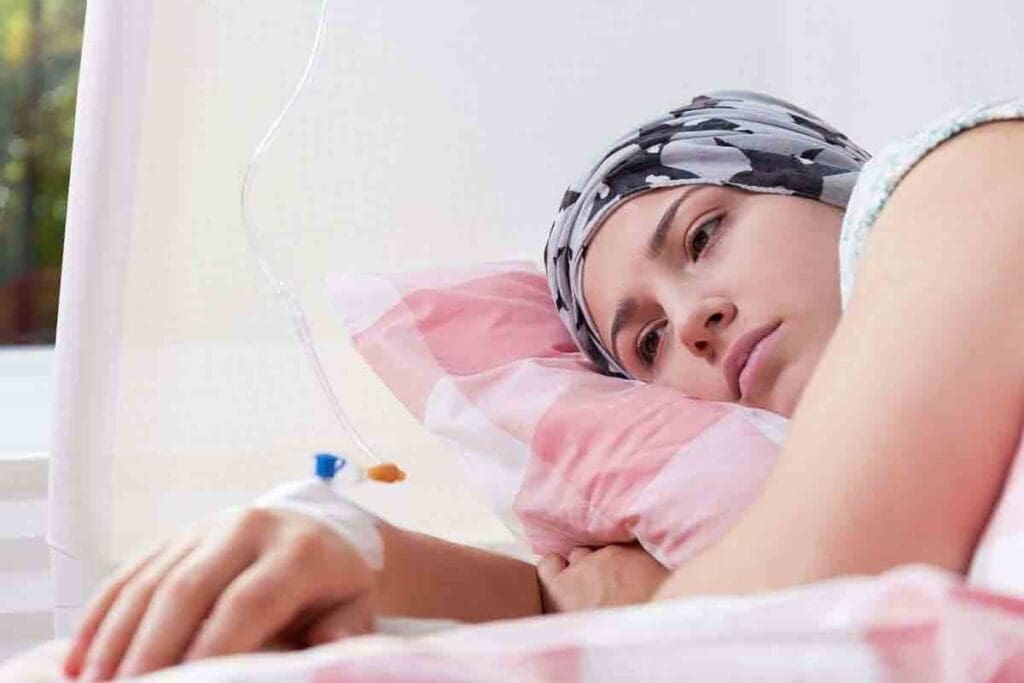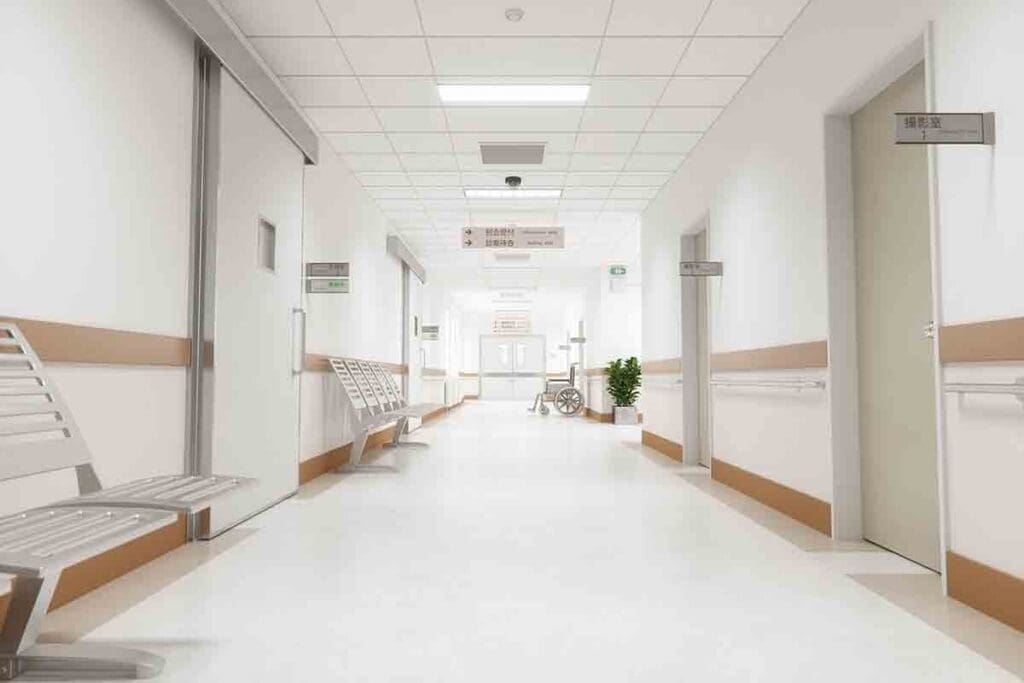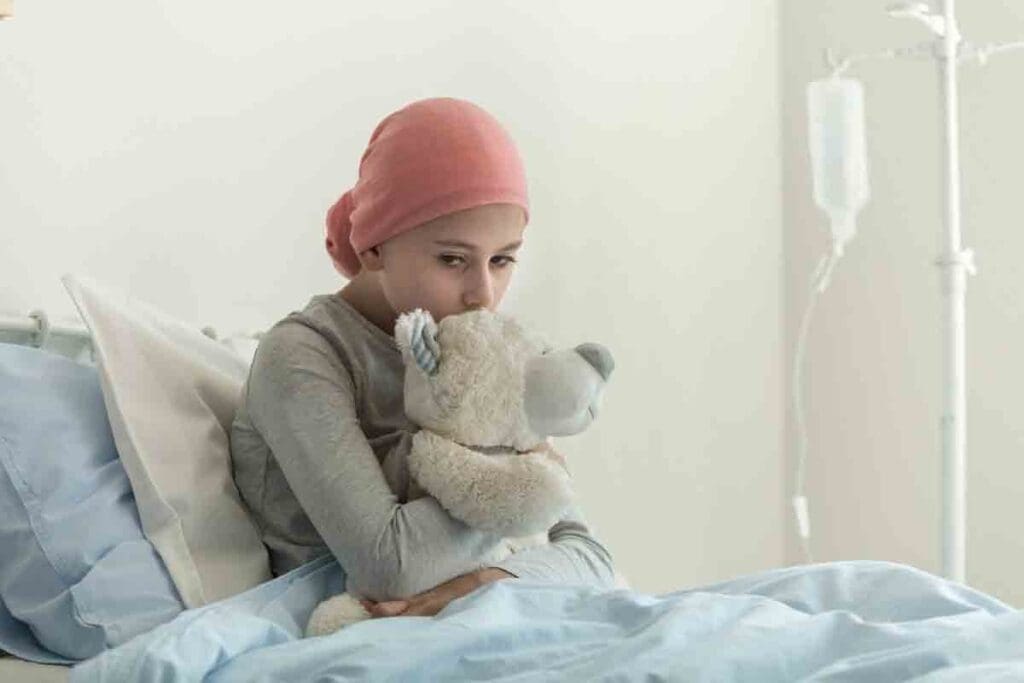Last Updated on November 20, 2025 by Ugurkan Demir

It’s vital to spot the early signs and symptoms of cancer in teens for quick diagnosis and treatment. Though cancer in young people is rare, knowing the risks is key. In the U.S., about 5,000 to 6,000 teens aged 15 to 19 get cancer each year.Explore early teenage cancer symptoms, warning signs, and when to seek medical attention for teens.
The top cancer types in teens include Hodgkin lymphoma, thyroid cancer, and brain tumors. At Liv Hospital, we focus on early detection and offer top care for these young patients.

Adolescent cancer is rare but serious in the U.S., hitting thousands of teens each year. It’s a big worry for teens, and knowing about it helps find and treat it early.
Cancer is the fourth leading cause of death in teens aged 15 to 19 in the U.S. About 5,000 to 6,000 teens get cancer every year. But, good news is that more teens are surviving cancer now.
In the UK, for example, over 87% of teens and young adults with cancer live for at least five years. The most common cancers in teens are leukemia, lymphoma, and brain tumors. These can really affect a teen’s life, from school to social life.
Finding cancer early is key for better treatment and survival. Early detection means treatment is easier and success rates go up. For teens, catching cancer early can save their life and improve their quality of life.
Knowing the signs of cancer in young adults is vital for early detection. Look out for signs like constant tiredness, unexplained weight loss, unusual lumps, and ongoing pain. Spotting these symptoms early can greatly improve treatment chances.
| Cancer Type | Common Symptoms | Importance of Early Detection |
| Leukemia | Fatigue, infections, bruising | Early treatment can improve survival rates |
| Lymphoma | Swollen lymph nodes, fever, weight loss | Timely diagnosis can lead to more effective treatment |
| Brain Tumors | Headaches, seizures, vision changes | Early detection can reduce long-term damage |
Knowing cancer stats and symptoms helps find and treat teen cancer early. By staying informed and alert, we can help improve outcomes for young cancer patients.

Cancer in teenagers comes in many forms, with some being more common. While rare, certain cancers are more likely to affect teens. We’ll look at the most common types, their characteristics, and symptoms.
Hodgkin lymphoma is a cancer that targets the immune system, affecting the lymph nodes. It’s marked by Reed-Sternberg cells. Common symptoms include swollen lymph nodes, fever, night sweats, and weight loss. Catching it early is key to successful treatment.
Thyroid cancer happens in the thyroid gland, found in the neck. It’s more common in females. Symptoms may include a lump in the neck, difficulty swallowing, and voice changes. If caught early, thyroid cancer is often treatable.
Tumors in the brain and central nervous system can be benign or malignant. Symptoms vary based on the tumor’s location and size. Common signs include headaches, seizures, and changes in personality or cognitive function. Early diagnosis is vital for effective treatment and improving outcomes.
Non-Hodgkin lymphoma is another immune system cancer, more common in older adults but can affect teens too. Symptoms include swollen lymph nodes, fever, and fatigue. Treatment varies based on the type and stage of the disease.
Knowing about these common cancers in teens helps in spotting signs early. This is critical for effective treatment and better survival rates. We must be aware of the common signs of cancer and seek medical help if symptoms last.
Cancer in teenagers can show up in many ways. It’s important to know these signs to get help early. These symptoms can also mean other things, but it’s better to check them out.
Unexplained weight loss is a big warning sign. Losing weight without dieting or working out more is a concern. It’s even more serious if you’re not hungry or have trouble eating.
Parents or teens might find unusual lumps or swelling in places like the neck or armpits. These can be soft or hard and might mean a tumor or lymphoma.
Persistent fatigue and weakness that doesn’t get better with rest is common in teens with cancer. It can make everyday life hard and lower your quality of life.
Persistent pain or discomfort that doesn’t go away is another warning sign. The pain might be in one spot or all over. Finding out why you have this pain is important, as it could be cancer.
Some common signs and symptoms of cancer include:
It’s key for teens and their families to know these signs. If you notice any of these symptoms, get medical help right away.
Knowing the symptoms of different cancers is key for early detection and treatment. Each cancer has its own warning signs. Being aware of these can help teenagers and their families get medical help quickly.
Lymphoma is a cancer of the lymphatic system. It often shows up as swollen lymph nodes in the neck, armpits, or groin. These nodes are usually painless and can be part of other symptoms like:
It’s important to remember that these symptoms can also mean other things. But if they keep happening, it’s vital to see a doctor.
Leukemia is a cancer of the blood and bone marrow. It can cause symptoms like:
These symptoms happen because leukemia messes with blood cell production. This leads to a lack of healthy cells.
Brain tumors can cause different symptoms based on where they are and how big they are. Common symptoms include:
Brain tumors can also mess with thinking and movement. This can make it hard to speak, balance, or move well.
Skin cancer, including melanoma, can show up in different ways. Key signs include:
Spotting skin cancer early can greatly improve treatment chances. It’s important to watch for skin changes and see a dermatologist if you’re worried.
Being exposed to risk factors and having a family history can increase the chance of getting cancer early. Knowing these symptoms can help in catching and treating cancer early. If you or someone you know has any of these symptoms, getting medical help is key.
It’s important for teenage girls to know the signs of cancer early. Cancer is rare in teens, but knowing the signs can help catch it early.
Watch your menstrual health closely. Look out for irregular periods, heavier or lighter bleeding, or abnormal bleeding between periods. These signs could mean health issues, like certain cancers. For example, cervical cancer can cause unusual vaginal bleeding.
Keep an eye on your breasts for any changes. Look for lumps, swelling, or nipple discharge. Most breast lumps are not cancer, but it’s best to check them out. Early detection is vital for breast cancer, even though it’s rare in teens.
Don’t ignore stomach pain, swelling, or feeling full without eating much. These could be signs of health problems, like ovarian cancer. If you have these symptoms, see a doctor right away.
It’s vital for teenage girls and their families to know these signs. If you notice anything odd or it keeps happening, get help. Catching cancer early can make treatment much more effective.
Cancer in teenage males is rare but serious. Knowing the warning signs is key to early treatment. We’ll look at symptoms most relevant to this age group.
Testicular cancer is common in teens. It shows up as swelling or pain in the testicles. Any unusual lumps or size changes should be checked.
Don’t ignore testicular pain or discomfort. Telling a doctor early can greatly improve treatment chances.
There are other male-specific warning signs of cancer. These include changes in the reproductive system. These might not always mean cancer, but they’re worth watching.
Knowing these signs and talking to a doctor can help catch cancer early. Regular check-ups and self-exams are important to spot problems.
In summary, while rare, cancer in teens can be caught early with the right knowledge. We urge teens and their families to stay alert and seek medical help for any unusual signs.
Cancer in teenagers is rare, but some types can happen. These include lung, colorectal, ovarian, and breast cancer. Knowing about these cancers helps find them early and treat them well.
Lung cancer is very rare in teens. It often happens in those who smoke or are exposed to harmful substances. Signs include a long-lasting cough, chest pain, and trouble breathing.
Colorectal cancer is rare in teens, linked to genetic conditions. Symptoms include stomach pain, changes in bowel movements, and blood in the stool.
Ovarian cancer is rare in teen girls. It can cause swelling in the abdomen, pelvic pain, and irregular periods.
Breast cancer is very rare in teen girls. But it’s important to know about it. Symptoms include a new lump, changes in breast shape, or nipple discharge.
Knowing the symptoms of these rare cancers helps find them early. The table below lists the main symptoms:
| Cancer Type | Common Symptoms |
| Lung Cancer | Persistent cough, chest pain, difficulty breathing |
| Colorectal Cancer | Abdominal pain, changes in bowel habits, blood in stool |
| Ovarian Cancer | Abdominal swelling, pelvic pain, irregular menstrual cycles |
| Breast Cancer | New lump or thickening, changes in breast shape, nipple discharge |
Finding these cancers early can greatly improve treatment. If you notice any symptoms, see a doctor right away.
We are seeing a worrying rise in cancer rates among teens and young adults. Some cancers are becoming more common in this age group. It’s important to look closely at these cancers and find out why they’re increasing.
Melanoma, the most serious skin cancer, is on the rise in young people. Early detection is key for treating it effectively. We need to spread awareness and teach preventive measures.
Other cancers like cervical, breast, and colorectal are also increasing in young adults. Cervical cancer is linked to HPV, making vaccination important. Breast cancer is becoming more common in younger people. Colorectal cancer, once rare in the young, is now being diagnosed more often.
The reasons for these rising cancer rates are complex. Lifestyle changes, environmental factors, and genetics play a role. Understanding these factors is key to preventing and detecting cancer early. Research into these trends is ongoing, focusing on risk factors we can change.
To tackle these rising cancer rates, we need a broad approach. This includes public health efforts, education on risks, and promoting screening and prevention. By working together, we can make a difference.
It’s important to know what increases the chance of cancer in teens. While it’s rare, some factors can make it more likely.
Genetics and family history are key in teen cancer. Certain genetic syndromes, like Li-Fraumeni syndrome and Familial Adenomatous Polyposis (FAP), raise the risk of specific cancers.
Some environmental factors can up the risk of cancer. These include:
Lifestyle choices can also affect cancer risk. While they’re more common in adults, they can impact teens too.
Knowing these risk factors helps us prevent and detect cancer early. This can greatly improve outcomes for teens at risk.
It’s important to know the difference between normal teenage health issues and signs of cancer. At Liv Hospital, we offer top-notch medical care. We help teenagers and their families make smart health choices.
Teenagers face many health issues due to growth and development. But, some symptoms might mean cancer. It’s key to know which signs need a doctor’s visit.
Issues like fatigue, weight changes, or pain are common in teens. But, if these problems don’t go away or get worse, seeing a doctor is important.
Some symptoms need immediate medical help. These include:
| Symptom | Possible Cancer Indicator |
| Unexplained weight loss | Various cancers, including lymphoma and leukemia |
| Persistent pain | Bone cancer, brain tumors, or other types |
| Unusual lumps or swelling | Lymphoma, leukemia, or other cancers |
Being ready for a doctor’s visit is helpful. Here are some tips:
Knowing the red flags and when to seek medical help is key. Teenagers and their families can take early action. At Liv Hospital, we provide caring and detailed care to those in need.
As we wrap up our talk on cancer signs in teens, it’s clear that knowing and learning are key. We’ve looked at cancers like Hodgkin lymphoma, thyroid cancer, and brain tumors. We’ve also talked about signs like tiredness, weight loss, and lumps.
Spotting cancer early can really help teens get better. Knowing the symptoms of different cancers and the risks helps a lot. We urge teens and their families to watch their health closely and see a doctor if they notice anything odd.
Our summary shows how vital it is to raise awareness about teen cancer. By teaching and informing, we can greatly help those fighting cancer.
Teenagers often get leukemia, lymphoma, and brain tumors. They might also get thyroid or testicular cancer.
Early signs include feeling very tired, losing weight without trying, and finding unusual lumps. Persistent pain is another symptom.
If you have symptoms that won’t go away, see a doctor. They will check you, do tests, and tell you what’s wrong.
Yes, girls might notice changes in their periods, find lumps in their breasts, or feel pain in their belly. These could be signs of cancer.
Cancer risk in teens can come from genes, the environment, and lifestyle choices.
Yes, many cancers in teens can be treated well if caught early. The treatment depends on the cancer type and stage.
Write down your symptoms, ask questions, and bring someone you trust. Be open about your health and worries.
Young adults might notice lumps, pain that won’t go away, skin changes, or unusual bleeding. These are signs to watch for.
Yes, teens can get lung, colon, ovarian, or breast cancer. These are less common but possible.
If you have symptoms that last or feel off, see a doctor. They can figure out what’s going on.
Colon cancer in teens might cause belly pain, changes in bowel movements, and bleeding from the rectum.
Yes, certain chemicals, radiation, or viruses can increase cancer risk in teens. Lifestyle choices play a role too.
Subscribe to our e-newsletter to stay informed about the latest innovations in the world of health and exclusive offers!